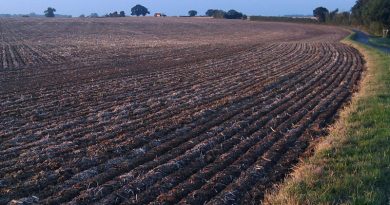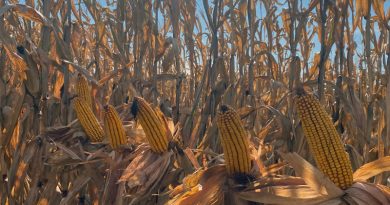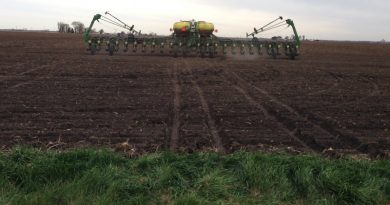Hybrid Selection by Seeding Rate
A crucial springtime decision every grower makes is at what population to set the planter. This one decision can make a huge difference in overall yield and standability performance. Growers often set their planter at the start of planting season and leave it there for the duration. This method does not allow every seed to grow to its full potential. Seed price has increased over the last decade making it more difficult to make a strong return on that investment. We encourage growers to consider seeding rate when making their hybrid selection.
Many have heard we can increase corn yields by increasing planting population, but this is not always the case. As corn genetics become more complex, treating hybrids differently is a key practice. Some hybrids have a fixed ear, meaning no matter how good growing conditions are, ears will not be larger than a predetermined size. Others are flex eared and can flex ear size to make the most out of a good year. Flex hybrids will not show increased yields with an increased seeding rate. Often, increasing population on a flex ear only increases plant-to-plant stresses with no added benefit.
Burrus Seed Research
Every year, the Burrus Research team runs a series of population studies replicated 14 times in different environments. In this study, we place current products and promising experimental products ranging in populations from 21,000 seeds/a to 46,000 seeds/a. This annual study determines the planting rate recommendation for each hybrid to maximize yield, manage risk and optimize seed cost per acre.
Yield is only one factor when looking at the data from this study. Another important component is standability. When you increase planting populations you increase interplant stress making plants more susceptible to root and stalk lodging. These components are all considered when making a planting population recommendation.
A factor to consider when making your seed selection, along with product and price, should be seeding rate. In years with tighter margins in the agriculture sector, growers are making more of their decisions based on price. In order to get the full picture, look at the price of seed on a “per acre” as opposed to a “per bag” basis. Many of our competitors recommend populations nearing 40,000. If you plant at these high populations to maximize yields, it makes the seed much more expensive, even if the seed is substantially cheaper “per bag.”
Example:
As an example, consider Hybrid A with a recommended planting population of 38,000 seeds/a at $260/unit and Hybrid B with a recommended planting population of 32,000 seeds/a at $300/unit. At first glance, growers could assume they would save $40/unit choosing Hybrid A. However, take seeding rate into consideration and you realize on a per acre basis, Hybrid A costs $123.50/a while Hybrid B costs $120/a. A savings of $3.50/a makes Hybrid B the better value even though the price per bag is higher. These differences change dramatically depending on cost and planting rates. I recommend taking the time to run a cost per acre analysis when making your seed decisions.
Population Over Price
Price should not be your only consideration when making a seed selection. Every farm should diversify their portfolio with both offensive and defensive products. Burrus’ Corn Planting Rates chart will assist your planting rate decisions for your soils.
Each Burrus hybrid has been tested in a range of populations, across different soil types, over several years to place them in appropriate planting rates in accordance to each acre’s yield goal. We have broken yield goal levels into: below 180 bu/a, 180-220 bu/a and above 200 bu/a. In each of these yield zones there is a range of planting populations. This range allows growers to adjust the population to account for other agronomic characteristics.
For instance, if planting a field you know will be harvested late, consider the lower end of the population range for better harvest standability. Think of these population ranges as the white lines on the highway. They will provide a range acceptable to be within but give you a whole lane to operate within. This will not only help reach the highest yields across your farm, but also reduce the risk across your acres.
This article was originally published in the 2020 Burrus Harvest Report.






